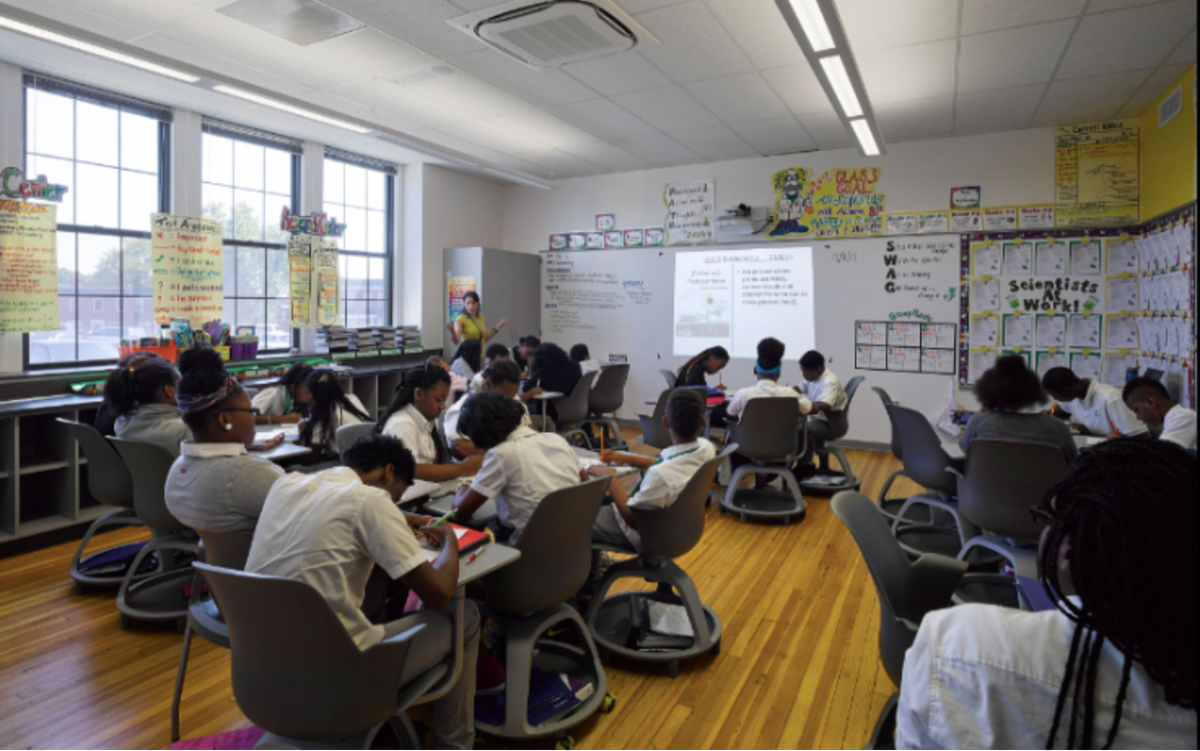36 Questions to Save the Nation: Part 2

Welcome to Part 2; Part 1 can be found here.
The expert whose interest I had attracted was a 6th-grade science teacher. He said, essentially, I hate your intervention – but I like the idea so much that I'm going to make one of my own. And what he said specifically was,
I wish to hell someone had suggested this to me earlier in my teaching career.
These remain, without exaggeration, some of the proudest words of my career.
Because this teacher had been not just a teacher, and not just a father of three, but the man who had been in charge of parent-teacher relationships for the Baltimore City school system. The idea of calling parents obviously wasn't new. The idea of trying to build relationships with parents obviously wasn't new; the school actually had a policy where each teacher was supposed to call or text 5 families at the end of every day. But this felt to him like a fundamentally new way of building relationships. And the way he did it was this:
The Target
First, focus on the kids who were the biggest problem: the ones disrupting class for everyone else.
To me, this was already a revelation. I had been using the school's own grades and absences data, and doing quite sophisticated things with them: writing my own algorithms for complex optimizations, as subroutines to a matching problem so that I could have the best possible treatment and control groups, when I did my relationship-building experiments. This seemed like the most important thing to do, for both me and my dissertation committee. What's more, this data already felt like a valuable secret. I never would have gotten it if I hadn't left my office in Pittsburgh, and I thought this was a uniquely up-close and uniquely powerful source for understanding what was happening in the classrooms. I took it seriously.
But when I talked to the actual teachers, they said in the bigger picture, they couldn't really care less about that data. A single 12 year old, standing on their desk, throwing things at their classmate, or simply yelling something every 90 seconds, could essentially ruin an entire hour's worth of education for their entire class of 20. This was what the teachers actually cared about. But behavior wasn't written down, and grades were. So if I hadn't been on site, I would have missed it completely.
To address this behavioral challenge, the thing that he cared about most, the teacher selected the bottom quartile of disruptive 6th-graders. There was no stratification. There was no matched control group. From his perspective, science was not a good reason to ignore a problem that needed to be addressed. But instead, there was something much more important: a professional, with access I couldn't begin to get by myself, who took this idea very seriously.
The Acute Phase: or, Establishment
The first part of this new intervention was similar to my initial idea, but it had at least one massive difference: a goal.
The teacher would invite a parent and the student to an hour-long meeting, and lay out the case simply. Here's where the behavior is; here's where it needs to be. This is what I, as the teacher, can do at school – I'd like to know what you, as the parent, can do at home. Then we, and the student, will agree on a plan, and go from there.
My own conversation had very similar components, such as the teacher and parent both discussing their strengths, and what they would be able to do, or not do, for the student. But to start with, it had only lasted on average about ten minutes, and this meeting was for an hour. (Which I never would have been able to get by just asking nicely.) And more importantly, it hadn't had an obvious purpose. It was just – there. A nice to have – not a necessity.
This goal was important in all of the ways that I think having a A Plan is important. It doesn't just ensure that effort goes towards a specific, desired outcome – it's also a framework for multiple people to coordinate with one another, towards that task. And as it turns out, working towards a shared goal has been independently verified as one of the most effective ways of not just building new, good relationships, but resetting old, bad ones. Like there might have been between a parent, a teacher, and a disruptive child.
The Chronic Phase: or, Maintenance
Now that this plan was in place, the real work had to be done – and the teacher did it. He would text every single one of these parents, every day, for six months. Every day, at least, he would send an update. It didn't have to be long, and it didn't have to be good or bad – it was just an update. Here's how it went in class today. Talk to you tomorrow. More if more was necessary, but at least this one text. This might sound like a huge lift, and it certainly isn't a small one – it was 6x as many texts as the school policy asked him to send, and it was only dealing with 25% of the students. But in the larger scheme of things, this didn't seem like such a big deal, because –
Half of the students improved dramatically.
Which is not the kind of result that I think anybody would have expected, of just about any kind of intervention.
"Dramatically" meant that half of the students who had been critically disruptive moved to either neutral, or active contributors to the classroom. Another quarter improved somewhat, but were still challenging – and the last quarter didn't improve at all. But half is a very large portion – especially when you frame it as, "For the price of one hour-long conversation, and a text message a day, you have a 50% chance of dramatically improving the behavior of an 12-year-old."
The Pieces We Have Assembled
This has already covered a lot of ground:
- A country that is behaving very badly – and a lot of people who have chosen to break their relationships with the idea of governed, civil society
- A relationship-building intervention that we know is cheap, easy, and powerful
- A framework for modifying that intervention to any number of other situations
- Strong evidence that having a goal and a clear target is much more effective than not having those things
- A very big goal of our own: massively improving the experience of every person living in the United States
Now think about those for a week, and see if you're able to guess where I'm going to take this next.
If you made it this far, and you haven't subscribed yet, I'd like to ask as a personal favor that you please subscribe, and share the newsletter with people you know. If I don't know that someone is listening, I have no reason to keep writing – and if I can't pay my rent, I have no ability to keep writing. With my profound gratitude to everyone, both paid and free.
And if we make it to Sunday, I'll see you Sunday.



